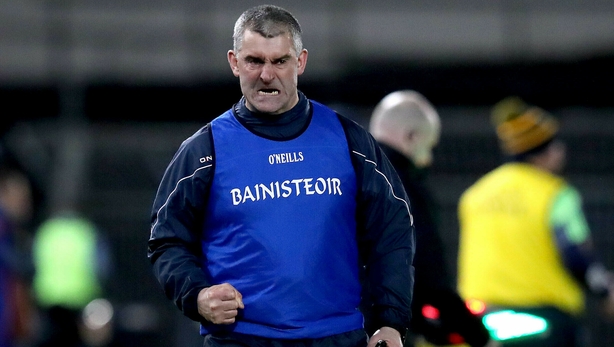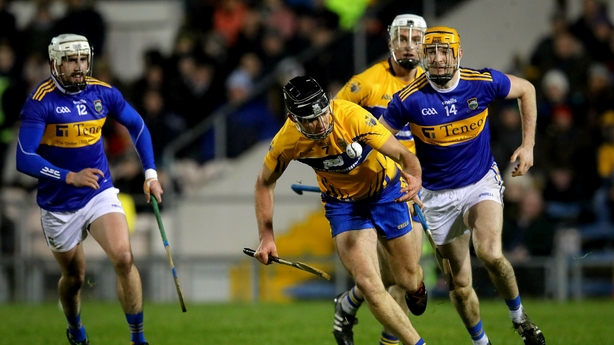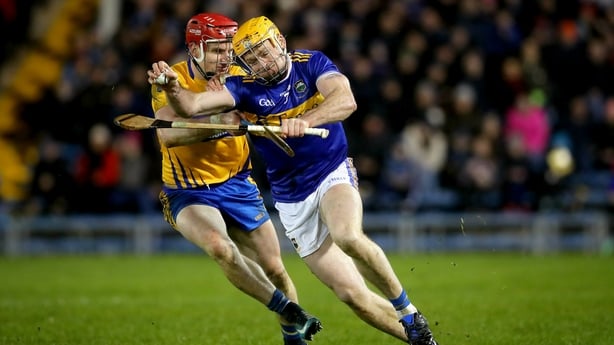Before Tipperary played Limerick in the opening round of the Munster League in December, Liam Sheedy spoke about his second coming as Tipperary manager, and the many new challenges involved.
Sheedy noted how the game had moved on to a whole new level since his last involvement in 2010. And he needed to catch up.
So did Tipperary though, who failed to win a championship game in 2018.
They showed admirable bravery and spirit to fight back against Cork and Waterford but the hurling they played in the opening halves of those matches was extremely poor.
They lacked pace in key areas while Tipperary never consistently hit the high scoring totals clocked by other sides.
And yet, their season still hung on the tightest of margins. In their last match against Clare, Jake Morris’ goal shot, which would have put Tipperary six points up and effectively out of sight, hit the post.
Clare came up the field to score an Ian Galvin goal, which transformed their season. If Tipperary had won that afternoon, they could have gone on and at least reached an All-Ireland semi-final.
The quality of Tipperary’s play in Munster didn’t suggest they could win an All-Ireland but a win against Clare would have bought them an invaluable five-week window for recovery.

Tipperary wouldn’t have qualified for a Munster final – they didn’t need to – but securing that third spot would have given the players the opportunity to rest, to physically and mentally recharge, and to get injuries cleared up.
As the third team, they would have had the same pathway as Limerick (who would have automatically qualified for the Munster final if Tipperary had beaten Clare); a preliminary quarter-final against Carlow, followed by a quarter-final against Kilkenny.
All bets would have been off but the biggest question is whether Tipperary could have continued to survive, or advance, with the hurling they were playing?
In Brian McDonnell’s outstanding statistical analysis of all 33 championship games last year, Tipperary were ranked in the bottom half of ten of the 12 key categories McDonnell analysed.
The devil was in the detail but, no matter where you looked, Tipperary’s numbers were way off.
The hurlingtalk Twitter handle also produced some revealing statistics on Tipperary, especially their use of possession; of 113 clearances hit past their opponents 65-yard line during play in four championship games, Tipperary only had a 29.2% retention rate.
Nobody doubted Tipperary’s attacking talent but facilitating a style change had to be one of Sheedy’s main starting points as soon as he took over.
The crisp and sharp attacking play which drove Tipp to the 2016 All-Ireland title had long been abandoned.
The only hint Tipperary showed of it last year was in their league game against Wexford but throughout the summer, Tipperary were expecting their ball-playing forwards to win possession from a long and direct style that didn’t suit them.
Tipperary’s average conversion rate in last year’s championship was just 43%. Their average wide count was just ten but Tipp weren’t creating the same high volume of scoring chances in comparison to other sides.
It had to be different under Sheedy and Saturday evening’s performance against Clare provided evidence that it will be.
The most impressive aspect of Tipp’s eight-point win was their savage workrate and desire but they married that intensity with a more cohesive playing style. Over the 70 plus minutes, Tipperary scored 2-16 from 25 scoring chances.

That conversion rate of 72% was even more impressive when you drill down into the statistics on such a horrendous evening for hurling; aside from three wides, the other four missed chances amounted to a penalty save, a shot that dropped short, a blocked shot and a point-chance that came back off the post.
Tipperary were really slick in the first half. After only converting one of their first four scoring chances, they nailed 12 of their next 14 opportunities.
Tipperary used the ball well all evening but their team-work and link-play was exemplary. The width of a post could have completely redefined Tipperary’s season in 2018 but one of the biggest criticisms consistently fired at the team under Michael Ryan was their tactical inflexibility.
Tipperary had brilliant players but were too predictable. Nobody will be getting carried away with a good performance in January, especially when a sending off had a huge impact on the outcome, but Tipp were extremely well drilled on Saturday.
After getting torn apart by Clare in the Munster League final two weeks earlier, Tipp were fully prepared for Clare this time around.
Much of the analysis afterwards focused on Padraic Maher’s positioning as the sweeper. The main thrust of the commentary was that Tipp set up with Maher in that role and Clare reacted by redeploying their own sweeper in Jason McCarthy and, at times, Conor Cleary. That evidence is still inconclusive.
Similar to the Munster league final, Clare withdrew Mikey O’Neill to leave Clare with a two-man full-forward line.

Yet Tipperary had prepared for that tactic by pulling out Willie Connors to match up with O’Neill, which left both teams with a spare man.
And Maher cleaned up. His play count in the first half alone was as high as 16. Maher sporadically played as a fluid sweeper at stages of last year’s championship game against Clare but his role on Saturday married perfectly with the change in Tipp’s style.
Maher’s lockdown presence as the spare man at the back allowed the Tipperary corner-backs and wing-backs to attack high up the field.
And all evening, Tipperary players were coming off the shoulder for pop passes, linking the play and working the ball through the lines.
It was a different Tipperary style, which was highly effective, but next Saturday evening’s game against Limerick will offer a different stress test to any new style Tipp are looking to roll out.
Tipp will surely tweak their game because if they set up with Maher as the sweeper again, Limerick certainly wouldn’t leave him unmarked, and allow Maher to dictate the tempo of their play.
Taking on the All-Ireland champions at home will be another challenge but it will also be another opportunity to gauge Tipp’s new tactical fluidity. And their progress under Sheedy.


